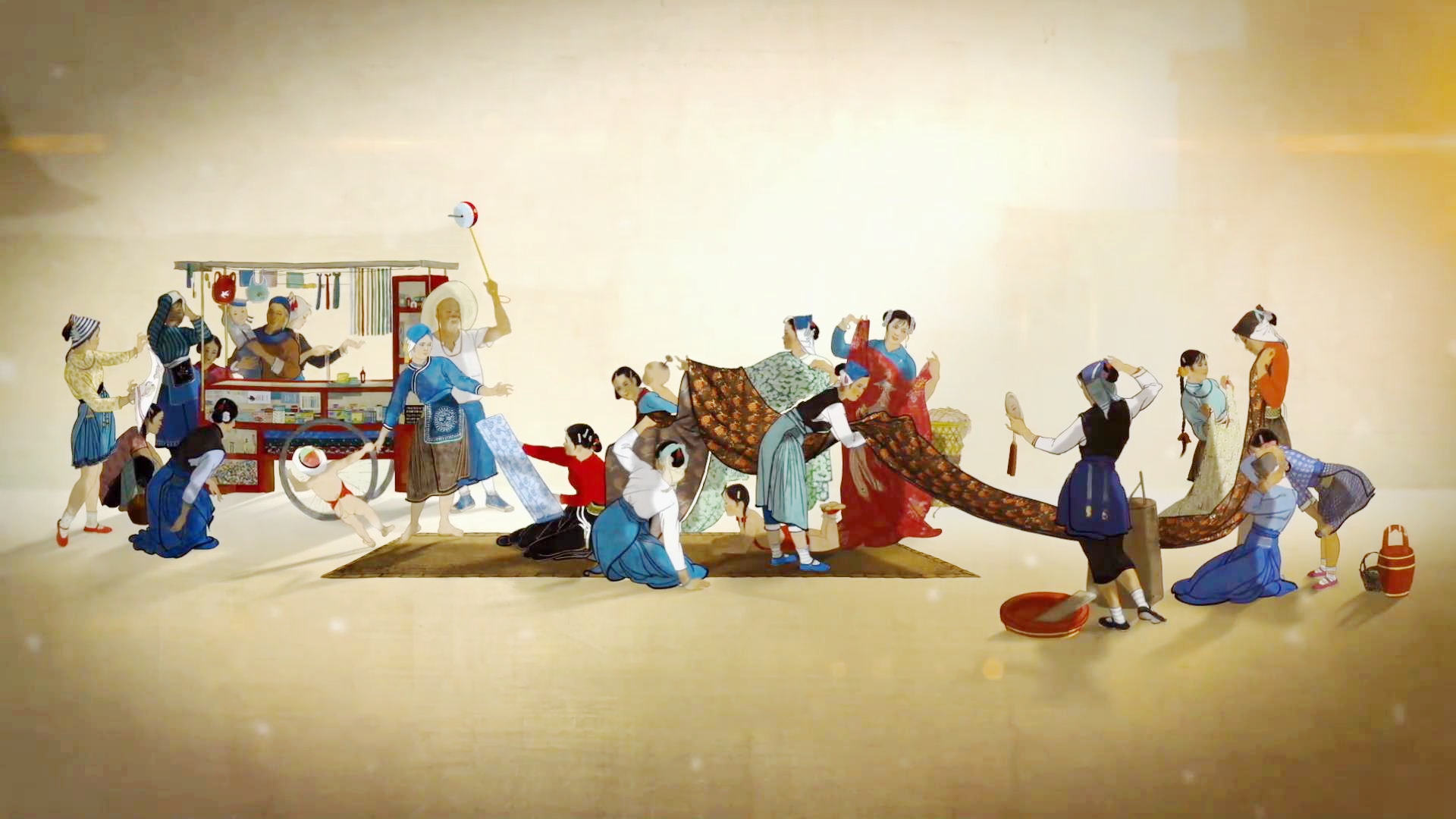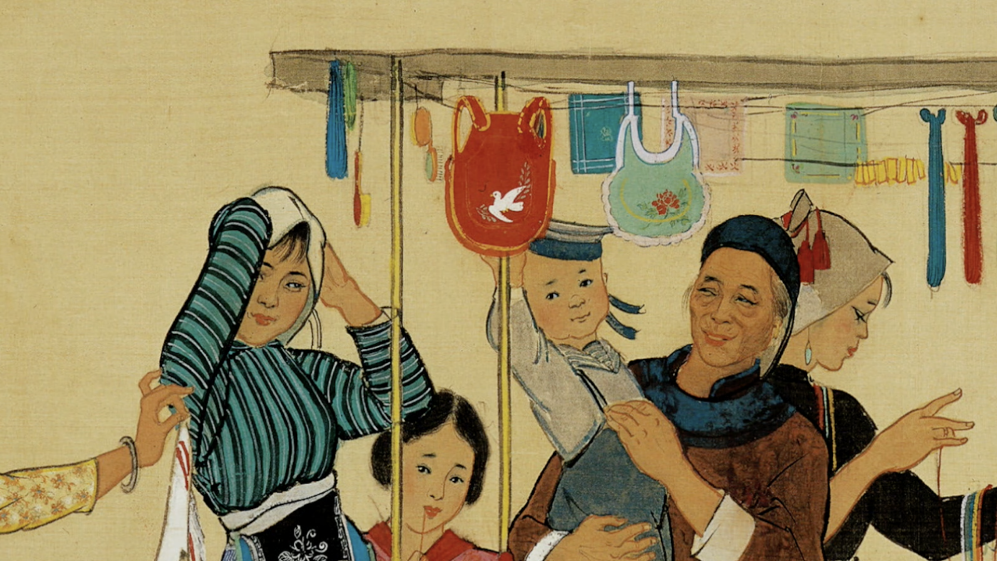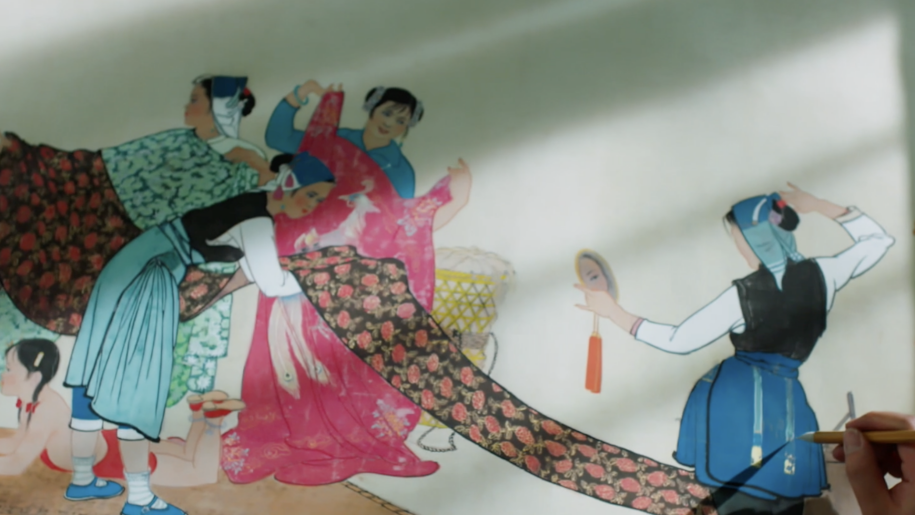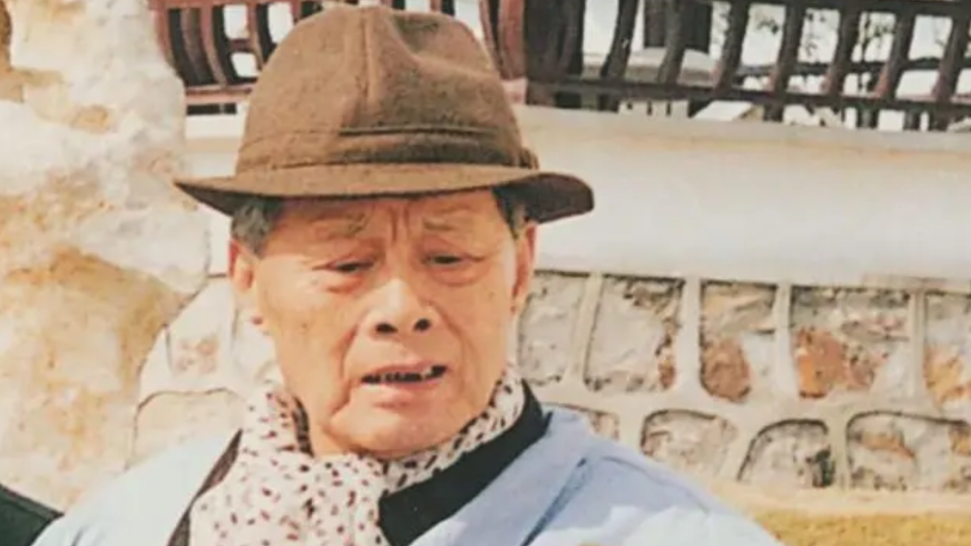Through the mists of time, the sound of a rattling drum is wakening a tranquil water town. The itinerant merchant announces his wares to all along the street. The varied items are meant to fulfill people's yearnings for a better life. The colorful fabrics and elegant floral hairclips will soon find their proud owners. Translated into "The Itinerant Merchant," painted by Chinese artist Ya Ming in 1958, this scene epitomizes a new era.
11:57

Since the Northern Song Dynasty (960-1127), the image of the itinerant merchant has served as a classic subject in many Chinese paintings. Historians can trace a timeline through the centuries in those artistic creations based on daily life. Ya Ming has renewed this timeless figure by bringing a sense of historical imagination into modern times through his innovative approach and ingenuity.
Born in 1924, Ya Ming developed a passion for painting when he was a child. His love of Chinese fine arts survived the perilous wartime years. In 1939, the 15-year-old joined the army while he was in Huainan, Anhui. As a wartime painter, he created a series of images to show his support for the revolutionary struggles.
After the war ended, Ya Mingwas given the opportunity to study and copy classical paintings from bygone centuries. He benefited from the instruction of master painters and gained fresh insights into the fine arts.
By 1956, the city of Suzhou had recovered its former prosperity. While penning some sketches at Taihu Lake, Ya Ming came across the inspiration that would lead to the birth of “The Itinerant Merchant.”

Details of the painting "The Itinerant Merchant" by Ya Ming. /CGTN
Details of the painting "The Itinerant Merchant" by Ya Ming. /CGTN
The most vibrant colors in the water town emanated from the local village girls. Their distinctive ornaments and clothing conveyed a brimming sense of hope and elation in a land bathed in sunshine. Such brightness helped Ya Ming forget the darkness of the war years.
As the painter occupied himself with sketching, an itinerant vendor passed by and reminded him of the juxtaposition of traditional and modern life. The merchant sparked his imagination. Ya Ming had found an outlet for his creative energy and decided to paint a contemporary itinerant merchant.
However, the portrayal had to be anchored on the subject’s real life. Rather than focusing solely on the vendor and the children around him, Ya Ming assigned a considerable visual weight to the industrious Suzhou women.

The process of coloring "The Itinerant Merchant." /CGTN
The process of coloring "The Itinerant Merchant." /CGTN
Like the notes of a mellifluous song, Ya Ming's brushstrokes infused the scene with a sense of poetry. As the sight reminded him of his wife rehearsing with her fellow professional dancers, he transferred the graceful swaying postures to the characters on his canvas.
"If a painting is too conventional and formulaic, it will leave no impression on the viewer. Now a painting like this has transformed the patterns established by ancient classics. In its characterization, it has boldly blended in various heart-lifting elements from the 1950s," said Yu Yang, an art critic from the Central Academy of Fine Arts, as he shared his thoughts on Ya Ming's masterpiece.

File photo of Chinese painter Ya Ming. /CGTN
File photo of Chinese painter Ya Ming. /CGTN
In the panorama of life in the 1950s, Ya Ming quietly included the dove and some items bearing the brand name "peace." After witnessing the cruelties of war, the artist insisted on celebrating the era of peace. Thus, traditional artistic techniques converged with a more contemporary spirit.
From the enigmatic patterns of historic pottery to a holy beast inscribed on bronze, from the romanticism of the ancient kingdom of Chu to the aspirations of poets from the Tang Dynasty (618-907), artists have always sounded the most vigorous notes of their times. "The Itinerant Merchant" has renewed this tradition.